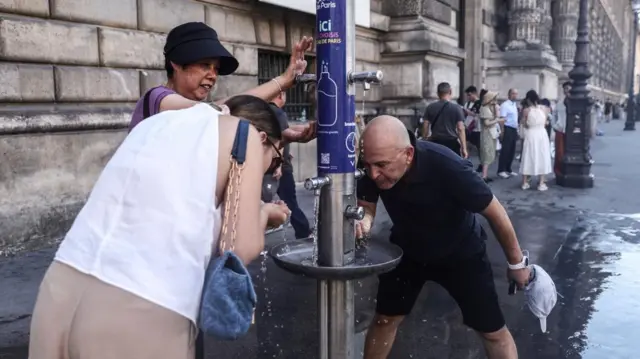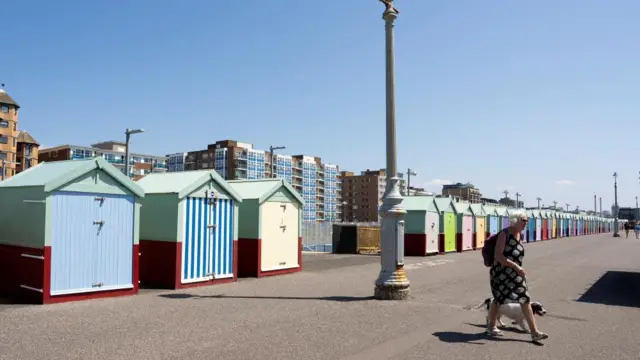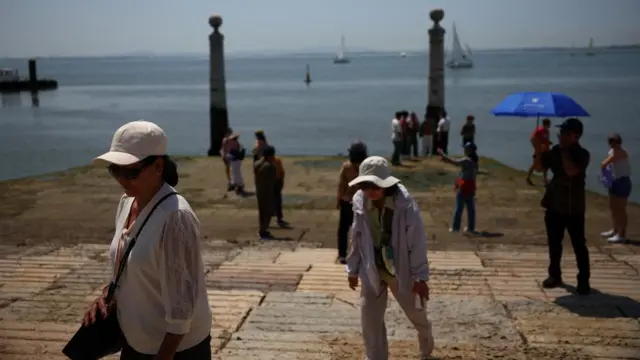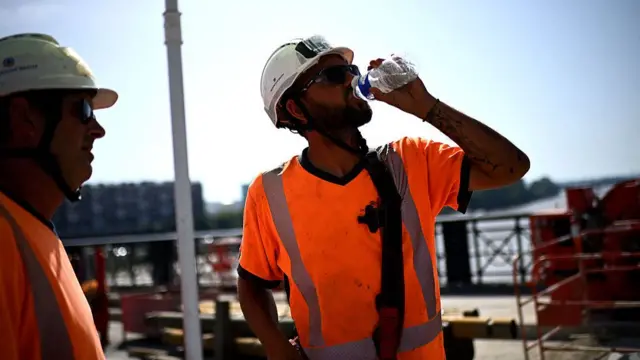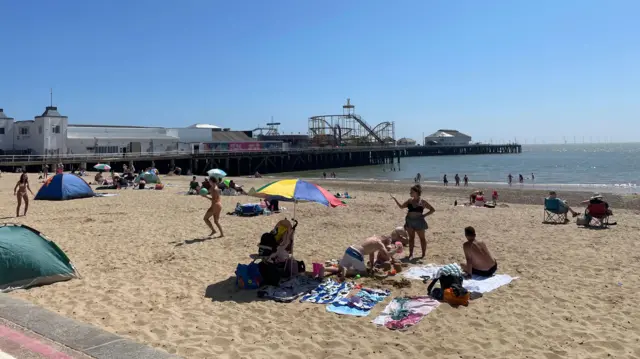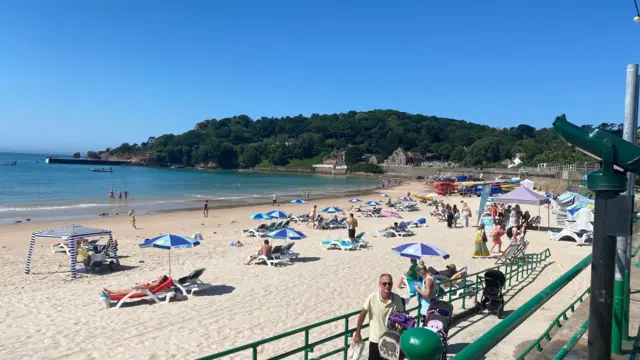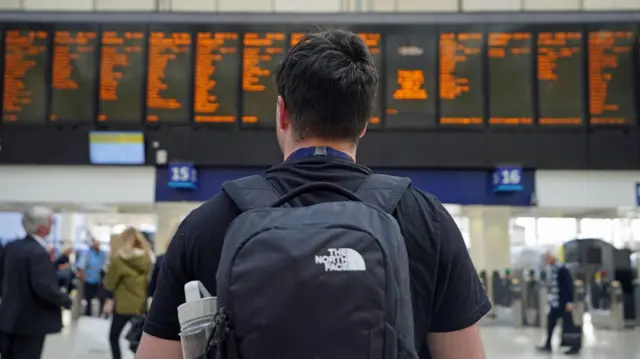Portugal and Spain broke June records with 46Cpublished at 09:23 BST 1 July
 Elizabeth Rizzini
Elizabeth Rizzini
Lead weather presenter
The heatwave across Europe continues today into July. At the weekend, national June records were broken in Portugal and Spain as temperatures hit 46.6C and 46C respectively.
As the area of high pressure responsible for trapping the intense heat drifts further eastwards, so temperatures will climb a little again further east in the next few days and into the weekend across the Balkans, Italy and Greece, and drop a little across the Iberian peninsula.
However, temperatures inland in southern Spain, although cooling a little, will remain in the low 40s all week.
